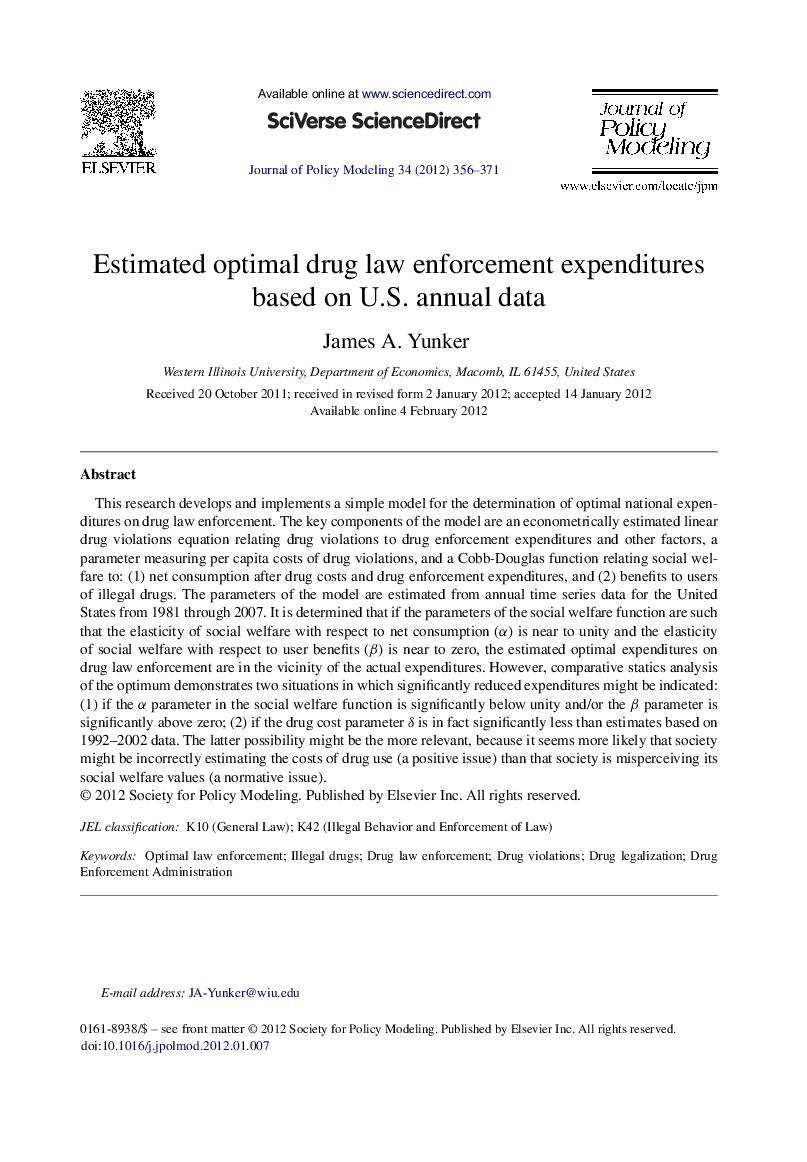| Article ID | Journal | Published Year | Pages | File Type |
|---|---|---|---|---|
| 967930 | Journal of Policy Modeling | 2012 | 16 Pages |
This research develops and implements a simple model for the determination of optimal national expenditures on drug law enforcement. The key components of the model are an econometrically estimated linear drug violations equation relating drug violations to drug enforcement expenditures and other factors, a parameter measuring per capita costs of drug violations, and a Cobb-Douglas function relating social welfare to: (1) net consumption after drug costs and drug enforcement expenditures, and (2) benefits to users of illegal drugs. The parameters of the model are estimated from annual time series data for the United States from 1981 through 2007. It is determined that if the parameters of the social welfare function are such that the elasticity of social welfare with respect to net consumption (α) is near to unity and the elasticity of social welfare with respect to user benefits (β) is near to zero, the estimated optimal expenditures on drug law enforcement are in the vicinity of the actual expenditures. However, comparative statics analysis of the optimum demonstrates two situations in which significantly reduced expenditures might be indicated: (1) if the α parameter in the social welfare function is significantly below unity and/or the β parameter is significantly above zero; (2) if the drug cost parameter δ is in fact significantly less than estimates based on 1992–2002 data. The latter possibility might be the more relevant, because it seems more likely that society might be incorrectly estimating the costs of drug use (a positive issue) than that society is misperceiving its social welfare values (a normative issue).
